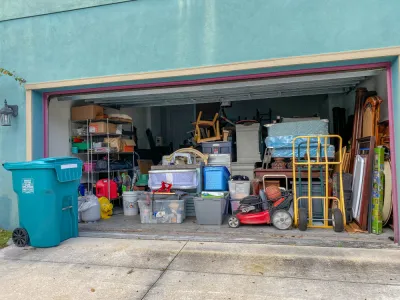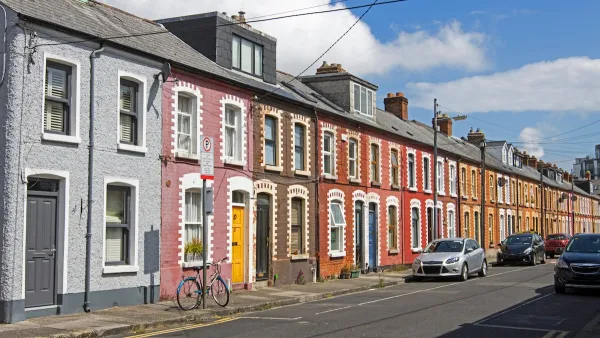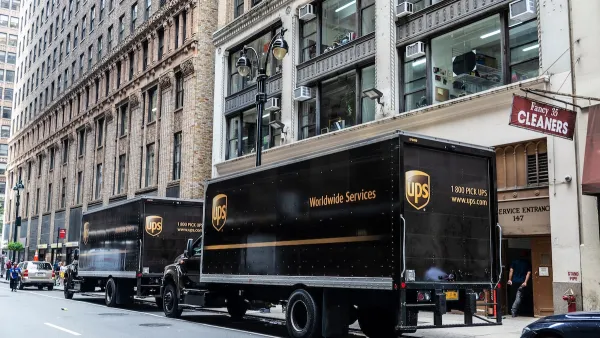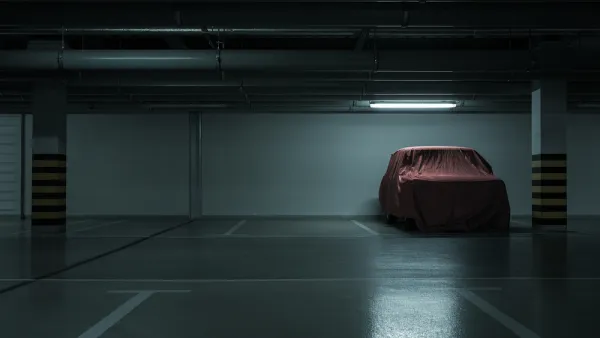With curbside parking available for free in front of most American homes, residents with private garages often choose to utilize the space for household storage. Putting a price on street parking could change that.

“The government constructs, maintains and distributes free car storage space along the curb in front of almost every house,” asserts Catie Gould, and because of this readily available parking space in single-family neighborhoods, many Americans park their cars on the street and use their garages for other purposes.
“A survey of detached homeowners in Sacramento, California, published in February, showed that when there isn’t space enough for both storing a car and household items, the cars are the items that end up moving elsewhere. The survey found that 37 percent of homeowners didn’t store a single car in their garage.” Surveys from other cities show similar results. A long-range UCLA study “found that 3 of 4 households had too much stuff in their garage to park a car.”
According to Gould, “When storing a car on the curb is free, a garage isn’t necessarily a garage: it’s a great big walk-in closet.” So, Gould asks, “When there is so much evidence that people don’t reliably use private parking spaces to store their cars, why does nearly every city still require them to be built?” Gould explains that these requirements can have a negative impact on housing affordability. “Mandates for off-street parking spaces raise housing costs and prevent housing from being built in the first place.”
Using an example from Vancouver, British Columbia, Gould argues that cities should price curb spaces to incentivize residents to park in their own garages or driveways and free up curbside space for public parking or other uses.
FULL STORY: One in Three Garages Has No Car in It

National Parks Layoffs Will Cause Communities to Lose Billions
Thousands of essential park workers were laid off this week, just before the busy spring break season.

Retro-silient?: America’s First “Eco-burb,” The Woodlands Turns 50
A master-planned community north of Houston offers lessons on green infrastructure and resilient design, but falls short of its founder’s lofty affordability and walkability goals.

Delivering for America Plan Will Downgrade Mail Service in at Least 49.5 Percent of Zip Codes
Republican and Democrat lawmakers criticize the plan for its disproportionate negative impact on rural communities.

Test News Post 1
This is a summary

Test News Headline 46
Test for the image on the front page.

Balancing Bombs and Butterflies: How the National Guard Protects a Rare Species
The National Guard at Fort Indiantown Gap uses GIS technology and land management strategies to balance military training with conservation efforts, ensuring the survival of the rare eastern regal fritillary butterfly.
Urban Design for Planners 1: Software Tools
This six-course series explores essential urban design concepts using open source software and equips planners with the tools they need to participate fully in the urban design process.
Planning for Universal Design
Learn the tools for implementing Universal Design in planning regulations.
EMC Planning Group, Inc.
Planetizen
Planetizen
Mpact (formerly Rail~Volution)
Great Falls Development Authority, Inc.
HUDs Office of Policy Development and Research
NYU Wagner Graduate School of Public Service





























